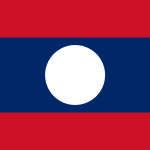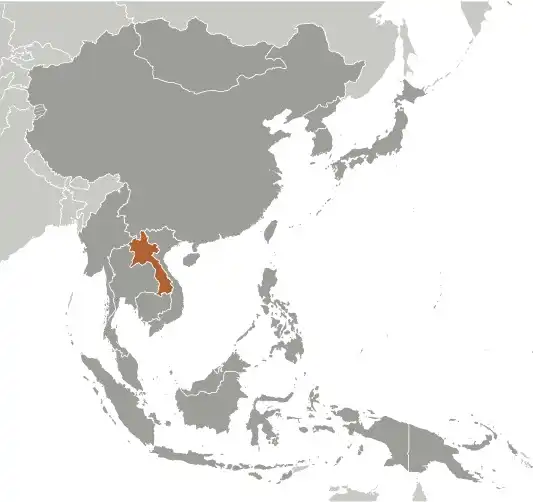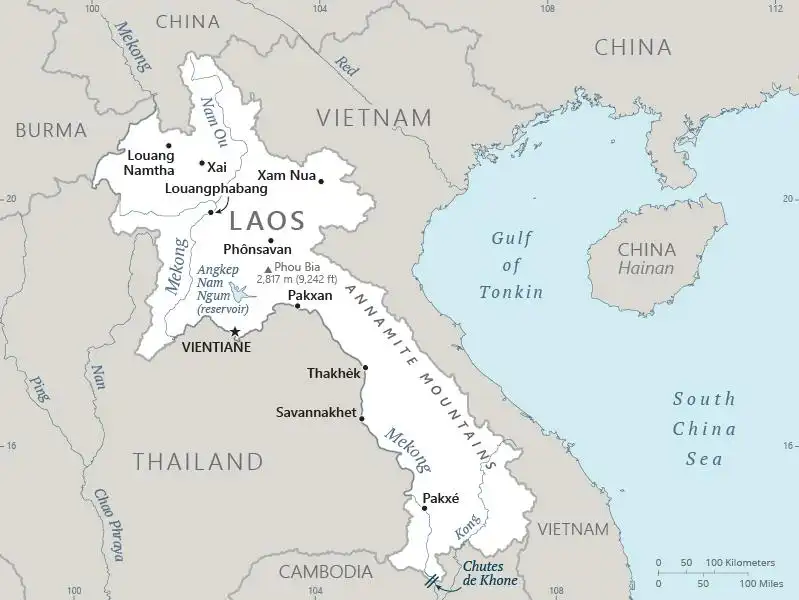
Laos
Veröffentlicht: 19. June 2022 - Letztes Update: 28. February 2025
Country Data Dashboard

Population
7,953,556
Growth: 1.26% (2024 est.)
GDP
$15.843 billion
(2023 est.)
Area
236,800 sq km
| Government type: | communist party-led state |
| Capital: | Vientiane (Viangchan) |
| Languages: | Lao (official), French, English, various ethnic languages |
People & Society
Ethnicity (2015 est.)
Religion (2015 est.)
Age structure

Economy
Economic overview
lower middle-income, industrial Southeast Asian economy; high inflation due to 2022 currency depreciation brought on by persistently high debt; new Laos-China railway and dry port; rising inequities; ongoing labor shortages
Real GDP (purchasing power parity) in Billion $
Real GDP per capita in $
Exports & Imports in billion $
Top 5 Import Partner in 2022 (94%)
Top 5 Import Commodities in 2022
- refined petroleum ⛽
- gold 💰
- electrical machinery ⚙️
- raw sugar 🍚
- plastic products ♻️
Top 5 Export Partner in 2022 (94%)
Top 5 Export Commodities in 2022
- electricity ⚡
- gold 💰
- rubber 🧤
- fertilizers 💩
- paper 📄
Geography
Map

Area
Natural resources
- timber 🌲
- hydropower 💧⚡
- gypsum ⚪🪨
- tin 🪙
- gold 💰
- gemstones 🪨
Climate
tropical monsoon; rainy season (May to November); dry season (December to April)
Historical Background Information
Modern-day Laos has its roots in the ancient Lao kingdom of Lan Xang, established in the 14th century under King FA NGUM. For 300 years, Lan Xang had influence reaching into present-day Cambodia and Thailand, as well as over all of what is now Laos. After centuries of gradual decline, Laos came under the domination of Siam (Thailand) from the late 18th century until the late 19th century, when it became part of French Indochina. The Franco-Siamese Treaty of 1907 defined the current Lao border with Thailand. Following more than 15 years of civil war, the communist Pathet Lao took control of the government in 1975, ending a six-century-old monarchy and instituting a one party--the Lao People's Revolutionary Party--communist state. A gradual, limited return to private enterprise and the liberalization of foreign investment laws began in the late 1980s. Laos became a member of ASEAN in 1997 and the WTO in 2013.
In the 2010s, the country benefited from direct foreign investment, particularly in the natural resource and industry sectors. Construction of a number of large hydropower dams and expanding mining activities have also boosted the economy. Laos has retained its official commitment to communism and maintains close ties with its two communist neighbors, Vietnam and China, both of which continue to exert substantial political and economic influence on the country. China, for example, provided 70% of the funding for a $5.9 billion, 400-km railway line between the Chinese border and the capital Vientiane, which opened for operations in 2021. Laos financed the remaining 30% with loans from China. At the same time, Laos has expanded its economic reliance on the West and other Asian countries, such as Japan, Malaysia, Singapore, Taiwan, and Thailand. Nevertheless, despite steady economic growth for more than a decade, it remains one of Asia's poorest countries.
In the 2010s, the country benefited from direct foreign investment, particularly in the natural resource and industry sectors. Construction of a number of large hydropower dams and expanding mining activities have also boosted the economy. Laos has retained its official commitment to communism and maintains close ties with its two communist neighbors, Vietnam and China, both of which continue to exert substantial political and economic influence on the country. China, for example, provided 70% of the funding for a $5.9 billion, 400-km railway line between the Chinese border and the capital Vientiane, which opened for operations in 2021. Laos financed the remaining 30% with loans from China. At the same time, Laos has expanded its economic reliance on the West and other Asian countries, such as Japan, Malaysia, Singapore, Taiwan, and Thailand. Nevertheless, despite steady economic growth for more than a decade, it remains one of Asia's poorest countries.
